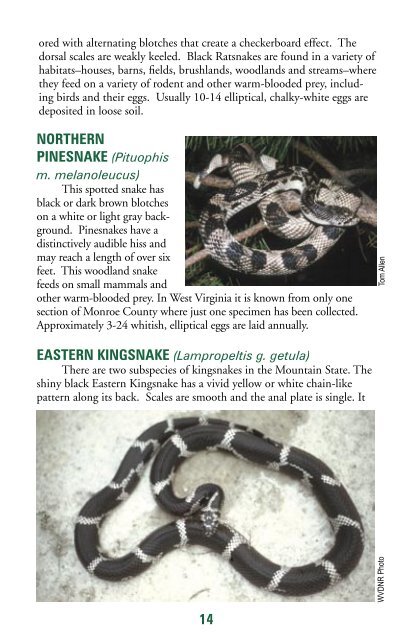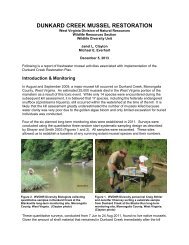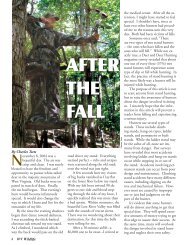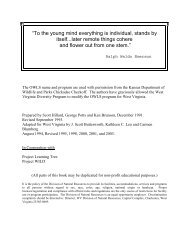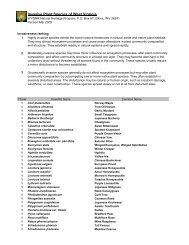Snakes - West Virginia Division of Natural Resources
Snakes - West Virginia Division of Natural Resources
Snakes - West Virginia Division of Natural Resources
You also want an ePaper? Increase the reach of your titles
YUMPU automatically turns print PDFs into web optimized ePapers that Google loves.
ored with alternating blotches that create a checkerboard effect. The<br />
dorsal scales are weakly keeled. Black Ratsnakes are found in a variety <strong>of</strong><br />
habitats–houses, barns, fields, brushlands, woodlands and streams–where<br />
they feed on a variety <strong>of</strong> rodent and other warm-blooded prey, including<br />
birds and their eggs. Usually 10-14 elliptical, chalky-white eggs are<br />
deposited in loose soil.<br />
NORTHERN<br />
PINESNAKE (Pituophis<br />
m. melanoleucus)<br />
This spotted snake has<br />
black or dark brown blotches<br />
on a white or light gray background.<br />
Pinesnakes have a<br />
distinctively audible hiss and<br />
may reach a length <strong>of</strong> over six<br />
feet. This woodland snake<br />
feeds on small mammals and<br />
other warm-blooded prey. In <strong>West</strong> <strong>Virginia</strong> it is known from only one<br />
section <strong>of</strong> Monroe County where just one specimen has been collected.<br />
Approximately 3-24 whitish, elliptical eggs are laid annually.<br />
EASTERN KINGSNAKE (Lampropeltis g. getula)<br />
There are two subspecies <strong>of</strong> kingsnakes in the Mountain State. The<br />
shiny black Eastern Kingsnake has a vivid yellow or white chain-like<br />
pattern along its back. Scales are smooth and the anal plate is single. It<br />
14<br />
Tom Allen<br />
WVDNR Photo


